As a deer hunter, a whitetail deer is a welcome sight, but not necessarily a rarity. But, catching a glimpse of the incredibly rare piebald deer is a scarce and beautiful sight.
Every now and again, hunting enthusiasts get to witness rare images of a piebald deer on social media, discovered by a “lucky” select few hunters.
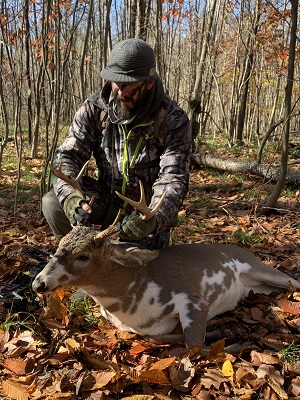
If you are a hunter and have the opportunity to harvest a piebald buck, consider it an extremely rare event.
DID YOU KNOW? The name “piebald” originates from the word “pie” – short for magpie, a black and white bird in the crow family. Piebald deer look bald because of their patchy appearance… Pie + Bald = Piebald! – VIDEOS BELOW!
This unique deer features impossible-to-miss white markings, standing out like a unicorn in a forest full of horses. In fact, many hunters focus exclusively on these hard-to-find critters – determined to add a new trophy to their collection.
But – what exactly is a piebald deer and just how rare are they?
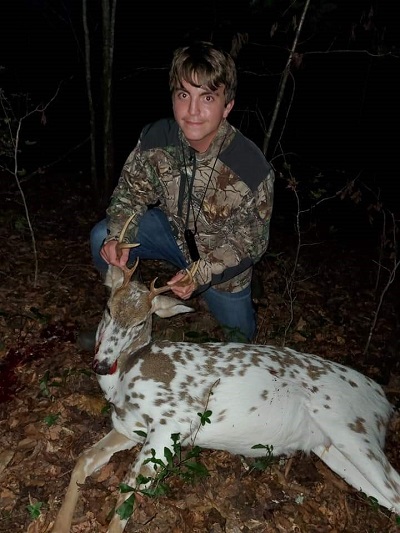
Piebald deer can have small areas of a splotchy, white pattern, or large areas of white, like this one pictured.
What is a Piebald Deer?
Contrary to what many hunters believe, piebaldism is not a combination of a regular whitetail deer and its albino counterpart.
Piebaldism is a genetic abnormality responsible for the piebald deer’s appearance. It’s a rare condition that affects less than 2% of the whitetail deer population.
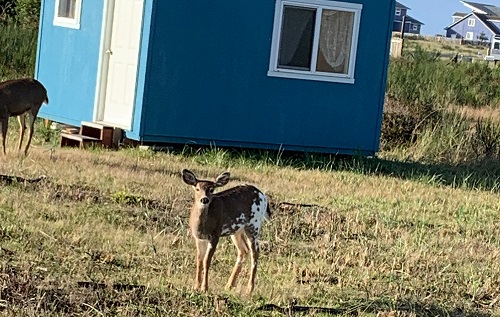
Every piebald deer is especially unique, making them an incredible sight to hunters and non-hunters alike.
According to geneticists and researchers, the name “piebald” originates from the word “pie” – short for magpie, a bird in the crow family. The magpie has black and white plumage.
The piebald deer has a genetic abnormality, causing patches of white across its body. This patchy look gives it a mixed up appearance, in which the patches, or lack of pigmentation almost make it “bald.” Pie + Bald = Piebald!
Sometimes piebald deer are also referred to as a “pied deer.”
Piebald definition:
Composed of incongruous parts. Of different colors, especially: spotted or blotched with black and white. A piebald animal (such as a horse)
Merriam-Webster
Piebald deer come in a range of colorations and variations. There is no stock-standard. Some piebald deer look as though they’ve been splashed with white paint. Others may look almost “airbrushed” or spotted.
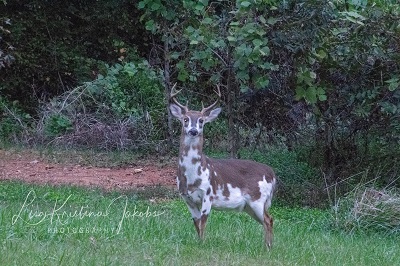
Piebald bucks like this one are a rare but beautiful sight.
It is believed that this recessive trait must be carried by both deer-parents, maternal and paternal, in order for the offspring to be piebald. That’s what makes the condition of piebaldism so exceptionally rare.
SCROLL DOWN TO VIEW MORE PHOTOS AND OTHER DETAILED INFO ON PIEBALD DEER
Piebaldism presents itself in many different forms, varying from moderate to severe depending on the circumstances. While some piebald deer can live normal, long, happy and healthy lives, most aren’t so lucky.
Interestingly, piebaldism isn’t just isolated to deer. Throughout nature, we see many other species experiencing this genetic abnormality, including horses, certain dog breeds, python snakes, moose, bald eagles, and on some cases, even humans.
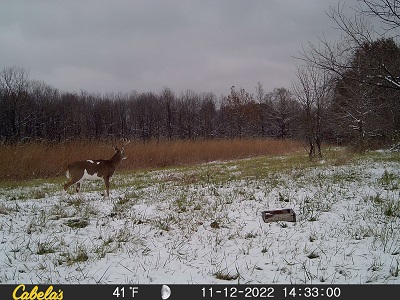
That’s not snow on that deer… it’s just piebald markings!
-
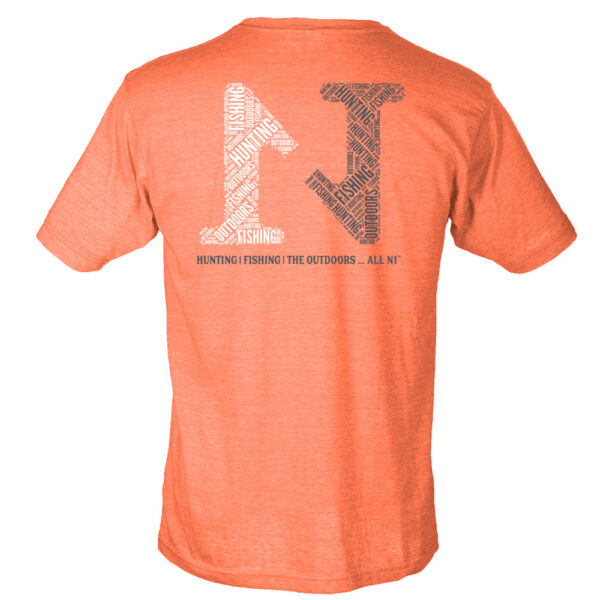
N1 Outdoors® Word Cloud Tee (Heather Orange)
Price range: $22.99 through $28.99 Select options This product has multiple variants. The options may be chosen on the product page -
Sale!
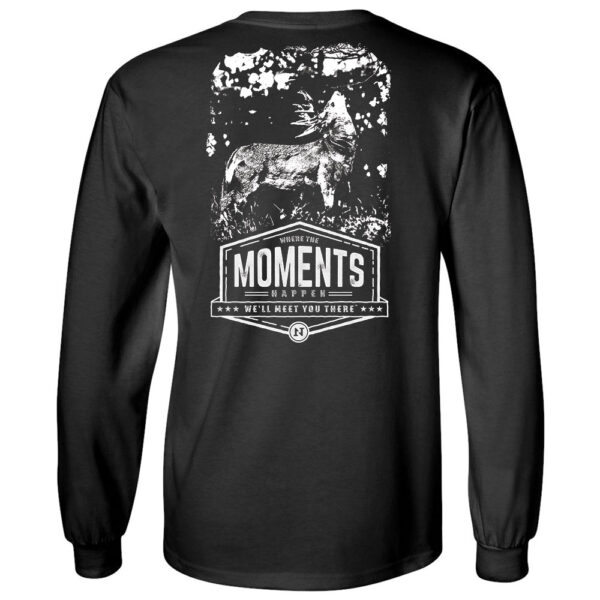
N1 Outdoors® Licking Branch Buck LS Tee
$19.00 Select options This product has multiple variants. The options may be chosen on the product page -
Sale!
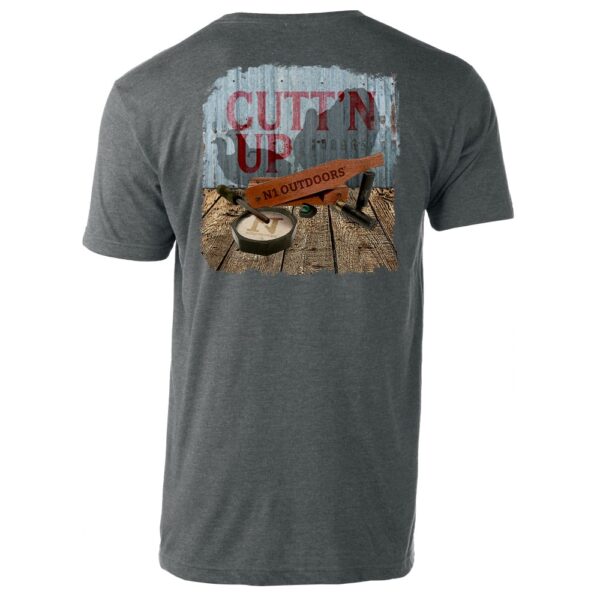
N1 Outdoors® Cutt’N Up Turkey shirt
Original price was: $28.99.$5.00Current price is: $5.00. Select options This product has multiple variants. The options may be chosen on the product page
Piebaldism | More Than Just A Coloring Abnormality
Apart from the strikingly unique coat, a piebald deer usually has other distinguishing features, include shorter-than-normal legs, an arched spine (scoliosis), and a prominent oral overbite.
Beyond the surface, a piebald deer normally experiences certain organ deformities, and even arthritis.
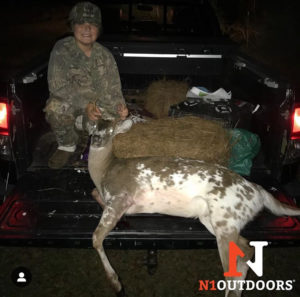
Piebald deer are a rare sight, but harvesting one is a feather in the cap for some!
According to geneticists, this boils down to something called “pleiotropy,” which causes one single gene to control numerous traits. The affected traits range from pigmentation to bone development and more.
It’s not unusual to see a piebald deer with debilitating genetic mutations and severe birth defects. Combined, these factors make it exceptionally challenging for piebald deer to survive in the wild – let alone make it to adulthood.
In one recent case study, Missy Runyan, a New York-based wildlife rehabilitator, was called to the scene of a distressed fawn in May of 2017.
The white-as-snow piebald fawn was plagued by severe birth defects, including life-threatening internal genetic mutations.
The fawn didn’t live for much longer, but Runyan managed to X-Ray the fawn’s body and detect numerous internal abnormalities. The results showed internal defects that made it impossible for the fawn to survive in the wild.
Piebaldism Vs. Albinism
The genetic causes for piebaldism and albinism differ, something you can easily spot by gazing into the affected deer’s eyes.
While an albino deer’s eyes are pink, accompanies by a pink nose and hooves with pink hues, piebald deer have brown eyes, a brown nose, and black hooves.
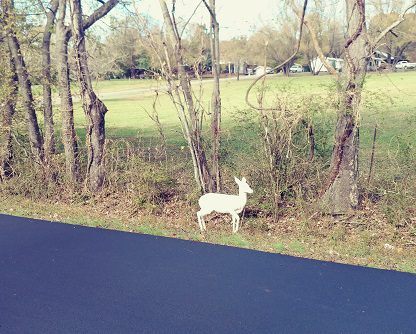
Some believe that a piebald deer is a cross-breed between an albino whitetail and a normal whitetail, but this is not the case. There are clear differences between albino deer (above) and piebald deer.
Piebald deer should also not be confused with melanistic deer, which typically lack brown or white color variations and usually appear to be black across their entire bodies.
While geneticists and scientists are still hard at work to fully understand the genetic mutation that causes piebaldism, one thing is for sure: If you see one, you should count yourself lucky. Few hunters will ever get the chance to get a glance of this rare creature out in the wild.
Piebald Deer | To Shoot…Or Not To Shoot?
More and more hunters are emerging on social media, slammed for their short-lived success at when taking rare trophy piebald deer. In various parts of North America, these rare white animals are seen as “sacred,” and not to be harmed.
Certain indigenous communities see piebald deer as “returning ancestors,” serving as a “reminder that something of significance is about to happen.”
There are various myths and legends, stating that by capturing and killing a piebald deer, you will “experience bad future hunts,” or, “guarantee your own death in a year’s time.”
Laws Regarding Piebald Deer | Check Your State Hunting Regulations
If you aren’t superstitious, do your homework by researching the rules and regulations of your state.
For example, it is illegal to shoot any white deer in Wisconsin, as herds of white deer are rising in numbers, making locals rather protective of the rare animals.
While certain jurisdictions have laws in place to protect piebald deer, among other white animals, many locations allow (licensed) hunters to lawfully harvest these rare creatures without consequence.
According to Brian Murphy, wildlife biologist and the Executive Director of the Quality Deer Management Association, there is no biological reason to protect piebald deer or albinos.

Spotting a piebald deer in the wild is a rare opportunity that many hunters don’t get to experience. Piebaldism affects just 2% of the whitetail population. (photo credit: Kevin Oldenburg)
Protecting them should not be regulated by the state, but rather, should be the decision of the landowners and hunters.
While piebaldism is indeed rare, population problems are apparently not a concern. Emerging research shows that the act of hunting a piebald deer will have no significant impact on the deer population, let alone damage it.
If you would wish to take such a rare trophy (and meat) back to your home, and if it is legal to hunt them where you live, there’s no reason not to hunt piebald deer.
Have you ever seen a piebald deer out in the wild? Leave a comment on this post or share your photos with us here at N1!
You can also view bow hunting tips videos and other hunting and fishing tips articles by visiting our blog.
-
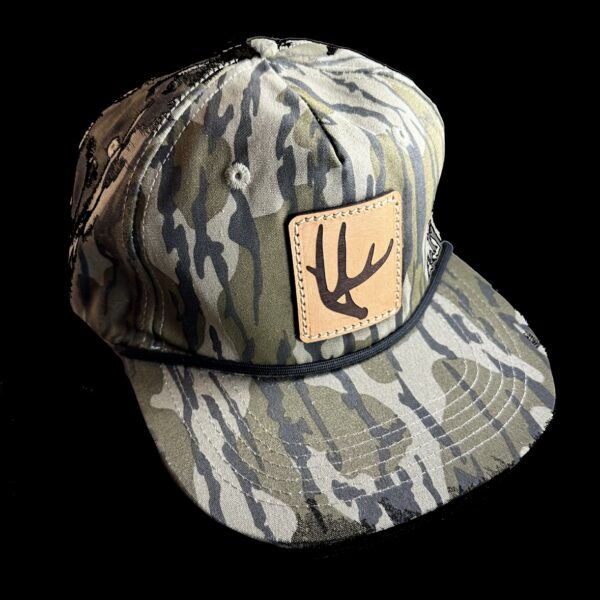
N1 Outdoors® Antler Leather Patch Camo Rope Hat
$29.99 Add to cart -

N1 Outdoors® Flagship TriBlock Leather Patch Hat (Kelly Green)
$29.99 Select options This product has multiple variants. The options may be chosen on the product page -
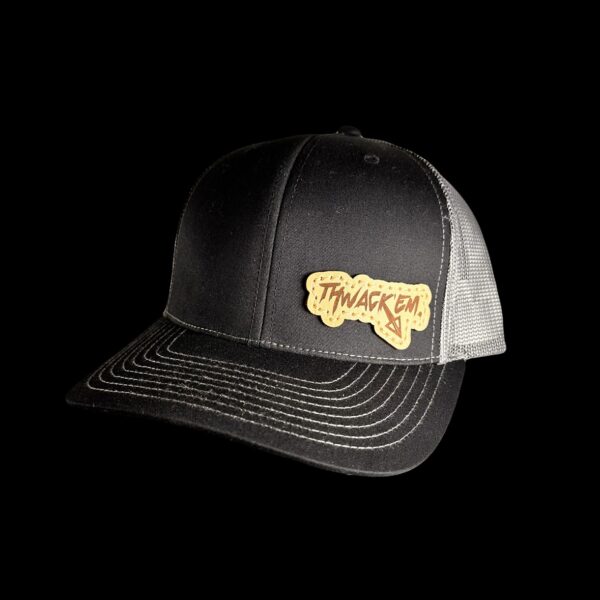
N1 Outdoors® Thwack ‘Em™ Leather Patch Bowhunting Hat (Black/Gray)
$29.99 Select options This product has multiple variants. The options may be chosen on the product page

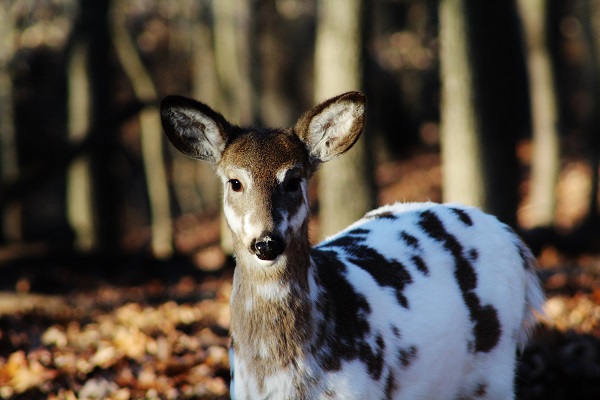



One of the first deer I ever saw in the wild while hunting was a melanastic buck no one has ever believed me 1975
There is a piebald deer in our neighborhood, larger than the rest of the deer its with,usually seen with a group of 4 other deer. It’s in the area of The town of Sennett NY spotted between Miller rd and Depot rd and Baker rd area if anyone is interested.
Tim, send us some pics and video if you see it!
OK i’ll try,usually see it early am between 5 and 5:30 am
For the last two days, we’ve had a piebald baby deer in our back yard and it’s taking cover in our brush when it’s not out in plain sight eating. The concern I have is that it’s all alone, there’s no mom or any other deer. Just the baby. Should I call someone? We live in Broome County, NY.
Katie, the mother deer are often not far away. However, if it’s been days and you have not seen the mother, maybe you could call the New York State Department of Environmental Conservation.
I saw a young piebald deer earlier today in a field here in Horry County, SC. It was with an adult female and was more white than brown. Absolutely beautiful!
They are beautiful already, but when they are piebald, they are that much more amazing!
We had a buck that was on one of the private properties I hunt for 7years and then he disappeared. 4years later we had another one show up as a 1.5yrold. I have video of him from Thanksgiving Morning 2017 come right into my stand.(if anyone can help me upload the video I would be glad to do so). We saw him multiple times in 2018 as well.
Josh, thank you for your comment. You cannot upload video to the blog, but you could message it to us on Instagram @N1outdoors.
My son killed an 8 point buck on Saturday, October 5, 2019. The back of the deers ears are white. We are assuming that this is a piebald deer.
Congratulations on the buck. We’d love to see a picture! Email us at info @ N1outdoors.com
Spotted a white faced deer on our property. Normal coloring otherwise, but a pure white face. Is this a piebald?
Connie, thanks for sharing! Sounds like it could be. Piebald deer can have very irregular white markings. If you see it again, we’d love to see a picture.
On our way to church this morning we saw a 6 point buck white with big brown spots all over it.
Have never seen one like this so I was wondering what you call this .This was in the mountains of North Carolina.
Thank you for taking the time to comment. Sounds very much like you saw a piebald deer!
Do all piebald deer have large white spots on them? My son shot a buck with two front hooves that are white and about three inches of white fur above all four hooves. (No other, out of place, white on the deer) He also has a very distinct Roman nose and has a very large body and weighs well over 200 pounds. I’d share photos if I knew how.
Piebald deer have all kinds of variations… you can email pics to N1outdoors@N1outdoors .com
In the woods next to my home I saw my first piebald deer. It’s absolutely beautiful. I was so amazed with its coloring and I did take pictures of it as we stared at each other closely for several minutes. I posted a pic on social media and that’s how I learned of it being a piebald deer. So happy to have seen this little one!
Cathy, it’s such a cool experience when you see a piebald deer! We’d love to see the picture you took!
I live in Shelby N.C.and for 2 years I have watched the most beautiful piebald deer grazing in our back yard. She is usually with a couple of other deer. We have also a white turkey and a grey and white with little black specks turken..
Cindy, thank you for sharing. Piebald deer are certainly an amazing sight. We’d love to see pics of the piebald deer and the turkey if you don’t mind sharing.
I sure will as soon as I can get good picture of each one.
One morning during Massachusetts archery season while hunting my tree stand on public land, I had a piebald 8 pointer come in 35 yards from me. He stopped suddenly like he sensed something was wrong. He then slowly walked a half circle out in front of me, never looked in my direction and ignored my grunt calls as if he was deaf. I couldn’t believe what I was seeing, I rubbed my eyes multiple times as I thought I was seeing things. Acquaintance of mine in the same area years earlier shot large 12 point albino during shotgun season. I felt privileged to see this deer and had no intention taking it, I just watched in amazement and you enjoyed the opportunity to watch this rare sight.
I had a Piebald deer that started coming to my property two years ago. She was very young and very tiny. I wish I could upload the picture of her. I called her princess. Then last year she was out in my yard and I was talking to her. She looked up and twitched her ear and out from the thicket came her little fawn. She was called Peanut. She was not a Piebald. We sold our home and moved away. But for two years she came almost everyday to eat sunflower seeds and wild berries in our yard as well as peaches from our tree. It was miraculous every time we saw her. I miss her so much. She was such a special blessing to me.
I live in Newport News VA and driving this evening in a neighborhood that’s adjacent to a very large wooded park TWO piebald deer crossed the road in front of me. I had no idea what the animals were until I started doing a google search and learned they must be piebald deer! I feel so fortunate to have seen these beautiful and unique animals!
Debbie, thank you so much for checking out our article on piebald deer! It’s rare to see a piebald, but to get to see 2 at one time is definitely a treat!
We live on 10 acres and I feed the deer. A piebald doe showed up this past week but seemed very timid. I got a rear night pict on my game camera but doest do her justice. I,ll try again.
I didnt know what piebald was but now I wonder if she has physical issues that cause her to be timid. She,s a beautiful animal.
They are amazing creatures!
This morning saw two piebald fawns (both mostly white with brown on their backs) with a BIG doe in my garden. First time I’ve seen them. I live not far from Deltaville, VA in a community which does not allow hunting, so maybe they will be around for a while.
While genetically inferior, they are neat to see.
Michael, thank you for reading and commenting! We’d love to see pictures! You can send to N1outdoors @ N1outdoors.com
Petersburg, Indiana. I had watched a piebald buck on my property for three years. He has always had funky antlers. This year he had 7 points so I harvested him on the first evening of gun season. The only difference from other piebald descriptions was that he had no apparent abnornmalities except he had white hooves in addition to his white and brown coat. I got lots of pictures of him before season.
Each piebald is so unique! Congrats on the harvest Joe!